|
|||
|
Two years ago, as Part 2 of a DCA Then & Now series, I ran comparison photos of Condor Flats in its early years and 2013. Condor Flats is now Grizzly Peak Airfield—so I’ve added a third photo for each subject. It’s a dramatic change, but the underlying structures are still the same. Please take a look.
|
|||
|
|
|||
|
Located within the Golden State land, Condor Flats is themed as a high-desert airfield dedicated to the wonder and ingenuity that helped spawn California’s legendary aviation industry—from [the] age of the first hand-made flying contraptions to the space age. — Disneyland Resort website, early 2001 A high-desert airfield, such as Edwards Air Force Base, is a wide-open expanse of flat ground with isolated structures. Condor Flats, despite having aircraft hangars and rocket engines, felt more like a narrow mountain valley than a desert airfield. In 2015, Condor Flats became Grizzly Peak Airfield. |
|||
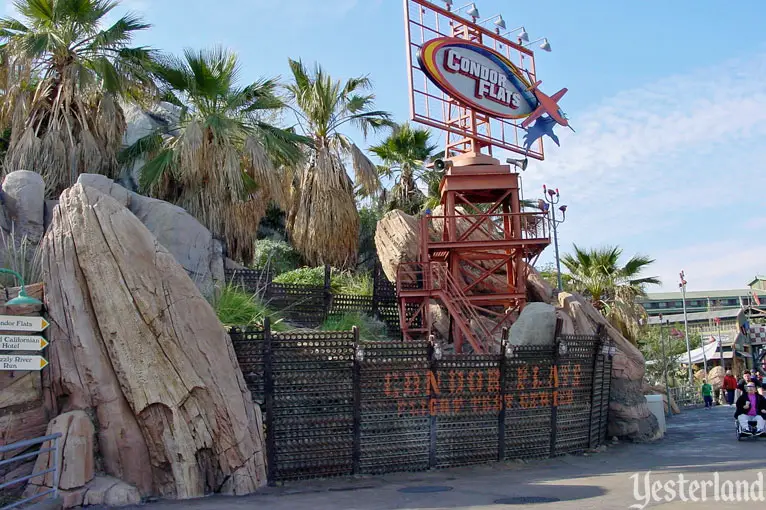
Photo by Allen Huffman, 2001 Entrance to Condor Flats from Sunshine Plaza (2001) |
|||
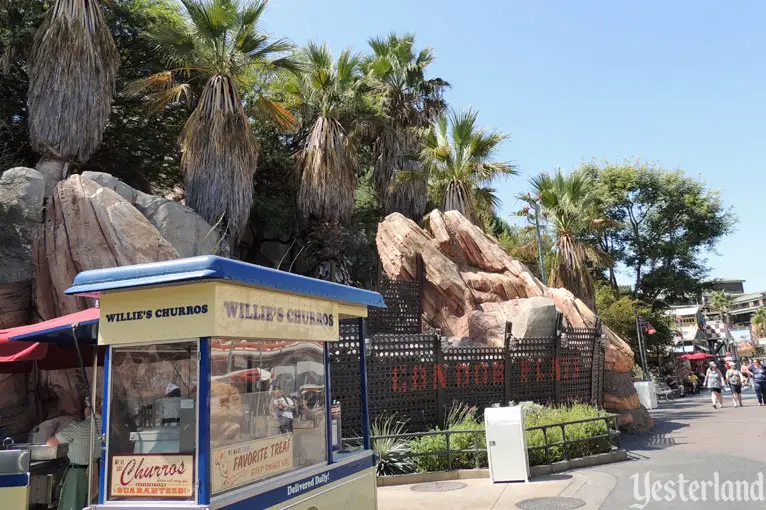
Photo by Werner Weiss, 2013 Entrance to Condor Flats from Buena Vista Street (2013) |
|||
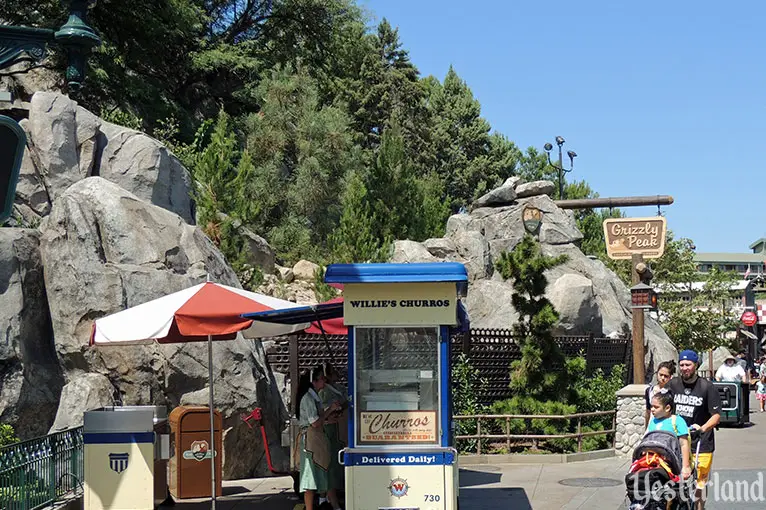
Photo by Werner Weiss, 2015 Entrance to Grizzly Peak Airport from Buena Vista Street (2015) |
|||
|
Comparing the first two photos above, the immediate difference is that the entrance to Condor Flats lost its main sign but gained a planter and a churro stand. On the sign in the first photo, notice that a Bell X-1 rocket plane casts a shadow of a California condor. We’ll see another Bell X-1 later. A closer look reveals that the lettering on the debris barrier was originally “Condor Flats Flight Test Center” but then became just “Condor Flats.” The third photo shows the entrance after the transformation to Grizzly Peak Airfield. The desert sandstone has become granite. The palms have been replaced by pines. And a new sign evokes the look of National Parks and other Federal lands. (Can’t they find a better place for the churro stand?) |
|||
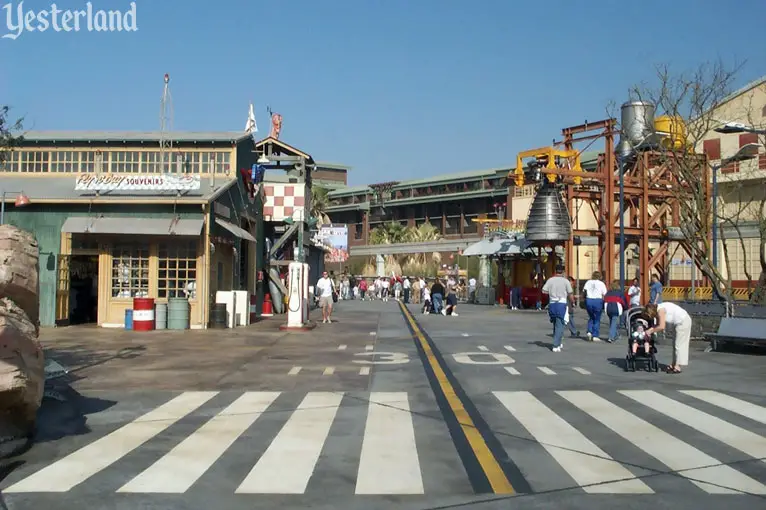
Photo by Ian Parkinson, 2001 “Airfield runway” through Condor Flats (2001) |
|||
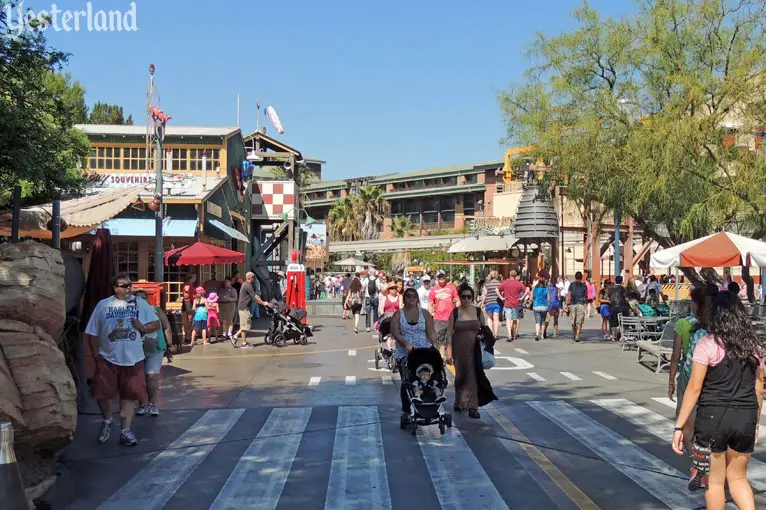
Photo by Werner Weiss, 2013 “Airfield runway” through Condor Flats (2013) |
|||
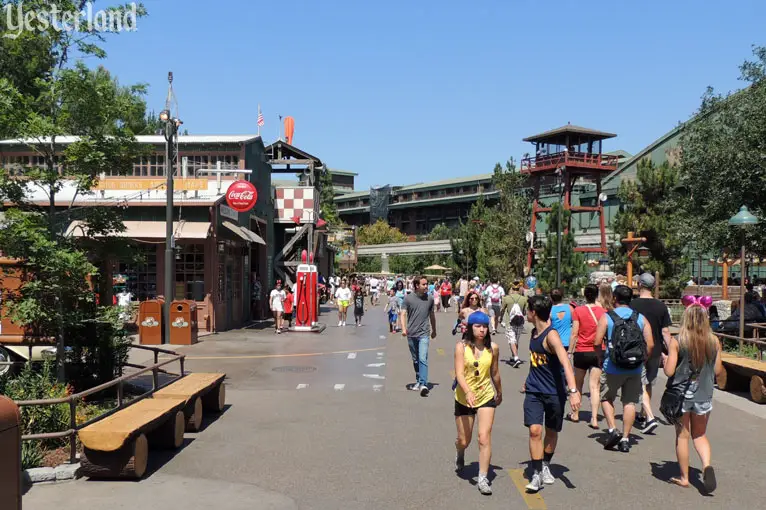
Photo by Werner Weiss, 2015 No visible “airfield runway” at Grizzly Peak Airfield (2015) |
|||
|
The stripes on the ground in the 2001 and 2013 photos may look like pedestrian crosswalks, but that’s not what they were supposed to be. The stripes marked the beginning and end of the airfield’s runway. But real runways don’t have structures right up against them. In the 2015 photo the stripes are gone. The pavement is no longer meant to be a runway. It’s now an apron that connects to a runway somewhere else. |
|||
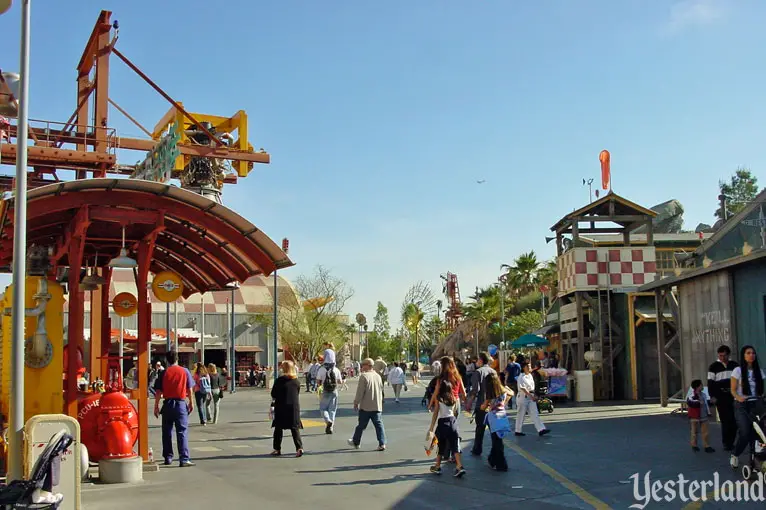
Photo by Allen Huffman, 2002 “Airfield runway” toward Sunshine Plaza (2002) |
|||
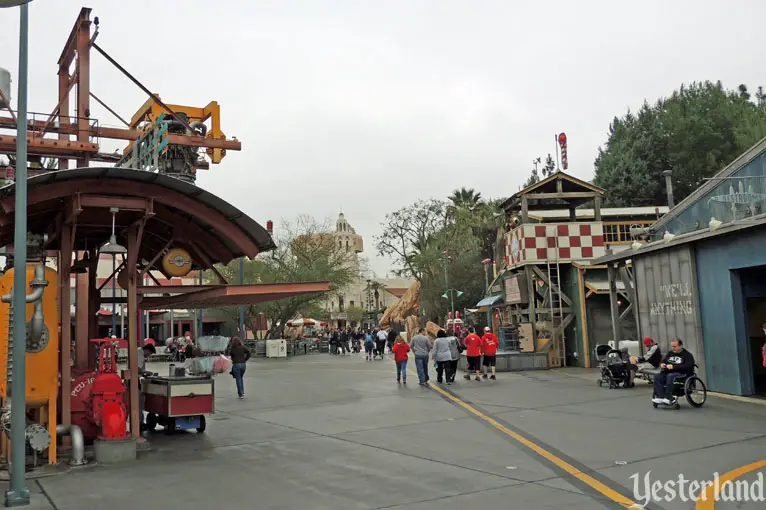
Photo by Werner Weiss, 2013 “Airfield runway” toward Carthay Circle Theatre (2013) |
|||
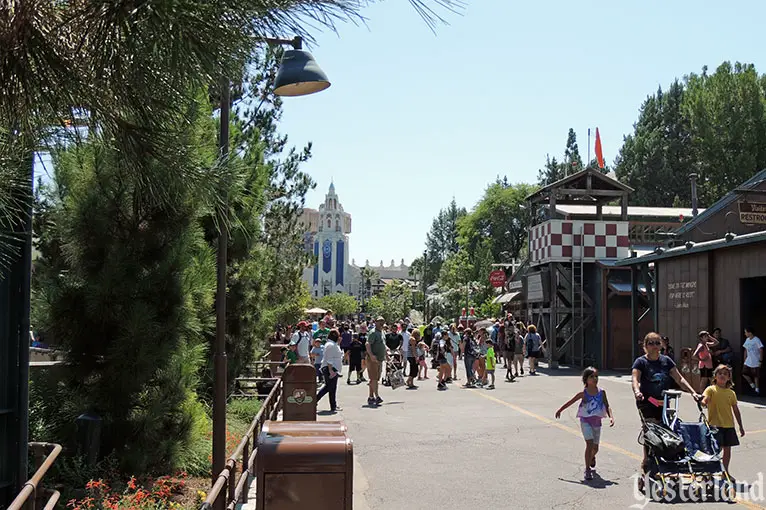
Photo by Werner Weiss, 2015 No longer a runway (2015) |
|||
|
Originally, the Condor Flats runway pointed toward Sunshine Plaza in one direction and Disney’s Grand Californian Hotel in the other. When the The Twilight Zone Tower of Terror was built, the runway pointed directly at the damaged hotel tower. To some, it suggested airplanes flying into the tower—a terrible thought in the aftermath of 9-11. Then the Carthay Circle Theatre was built between Condor Flats and the Tower of Terror. As already noted, the pavement is no longer supposed to be a runway. |
|||
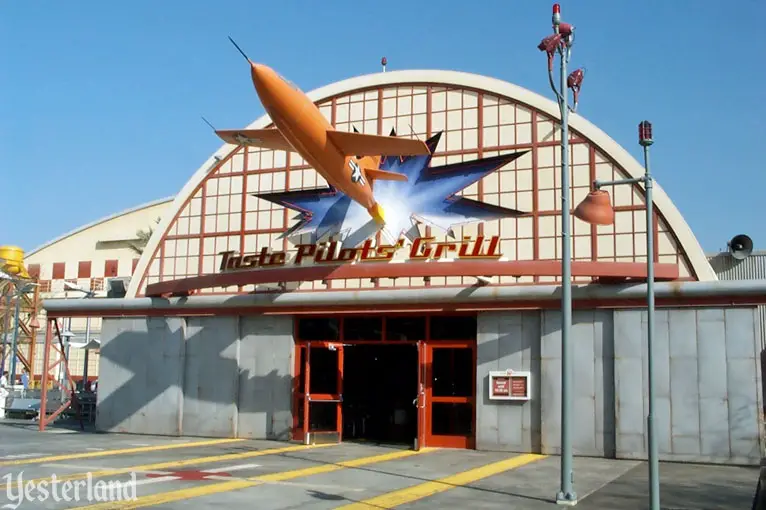
Photo by Ian Parkinson, 2001 Taste Pilots’ Grill with Bell X-1 (2001) |
|||
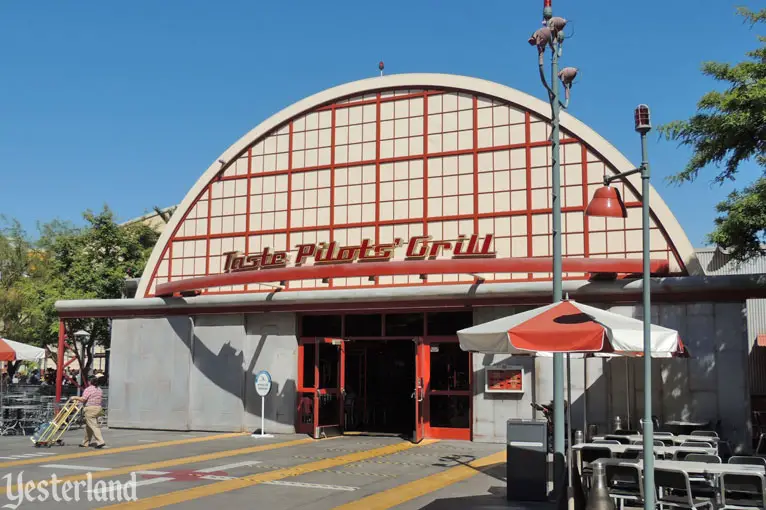
Photo by Werner Weiss, 2013 Taste Pilots’ Grill without Bell X-1 (2013) |
|||
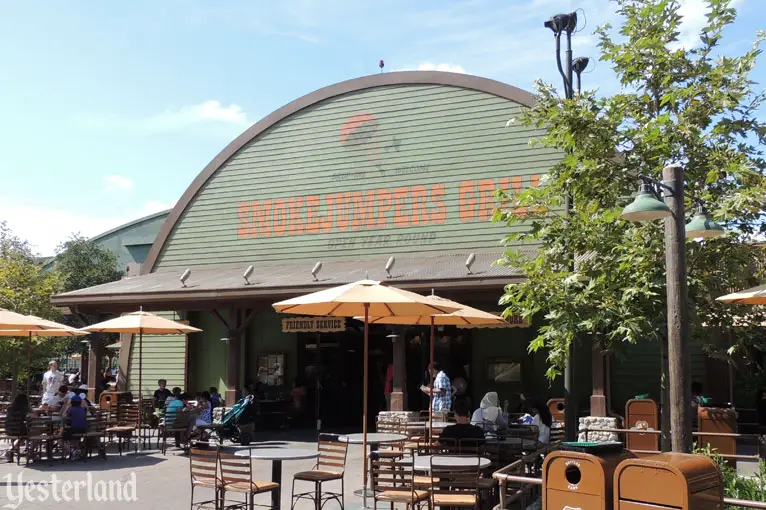
Photo by Werner Weiss, 2013 Smokejumpers’ Grill (2015) |
|||
|
From when the park opened until the beginning of 2015, Taste Pilots’ Grill served burgers, fries, and other popular American fast food—presumably just like what test pilots ate. The eatery’s name was part of the dwindling list of puns that were once pervasive in the park. Air Force Captain Charles “Chuck“ Yeager broke the sound barrier with a Bell X-1 on October 14, 1947. The exterior originally had a Bell X-1 breaking through a cartoon-like explosion (representing the sound barrier). The Taste Pilots’ Grill hangar looked more authentic without it. In early 2015, the restaurant was transformed into Smokejumpers’ Grill. |
|||
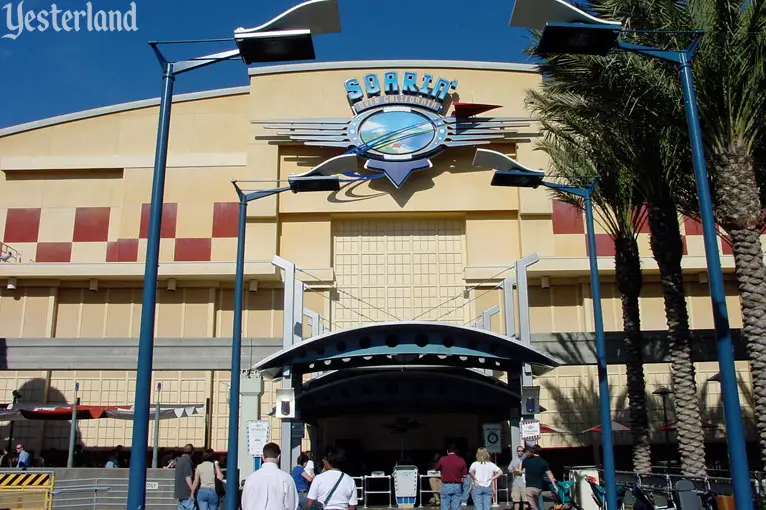
Photo by Allen Huffman, 2002 Soarin’ over California “hangar” (2002) |
|||
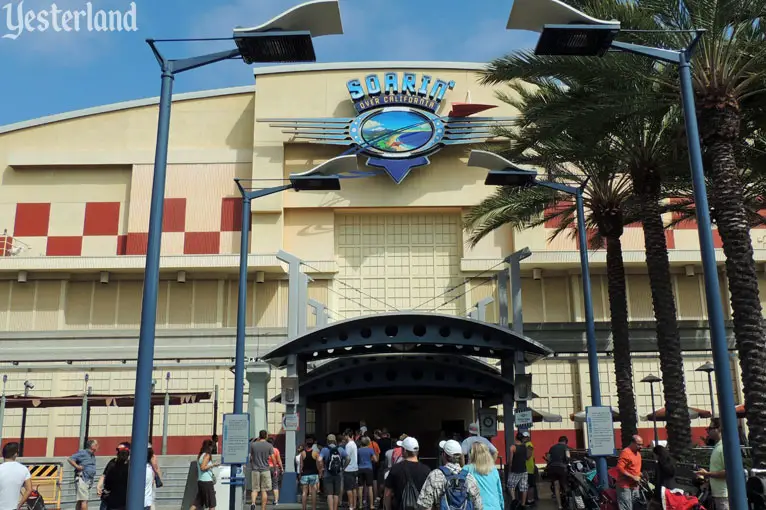
Photo by Werner Weiss, 2013 Soarin’ over California “hangar” (2013) |
|||
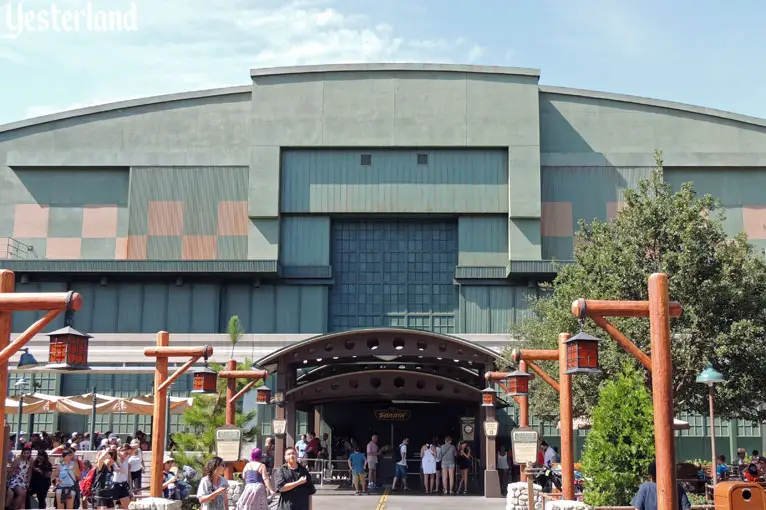
Photo by Werner Weiss, 2015 Soarin’ over California “hangar” (2015) |
|||
|
On opening day in 2001, California’s California Adventure officially had four lands:
But one of these lands, Golden State, officially had six districts:
Golden State never made much sense as a land. Considering that Golden State means California, and the whole park was supposed to be about California, it meant there was a land featuring multiple parts of California in a park featuring multiple parts of California—one super-land and three other lands that somehow did not qualify to be part of the Golden State, despite also representing California. |
|||
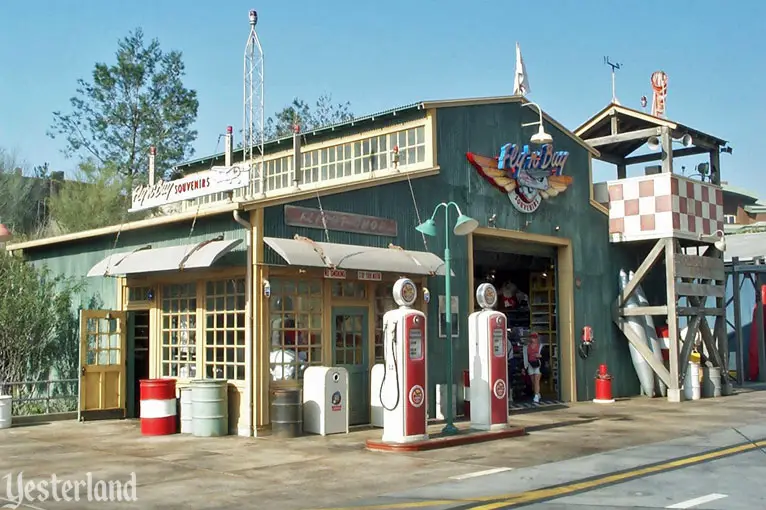
Photo by Ian Parkinson, 2001 Fly’n’Buy (2001) |
|||
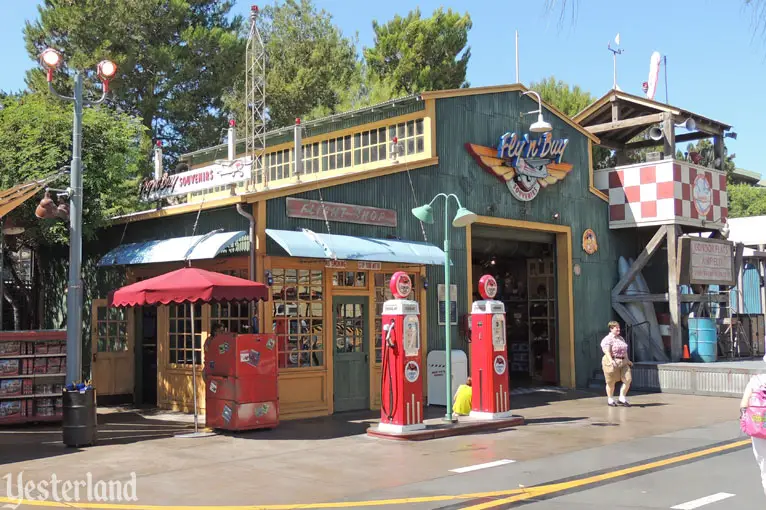
Photo by Werner Weiss, 2013 Fly’n’Buy (2013) |
|||
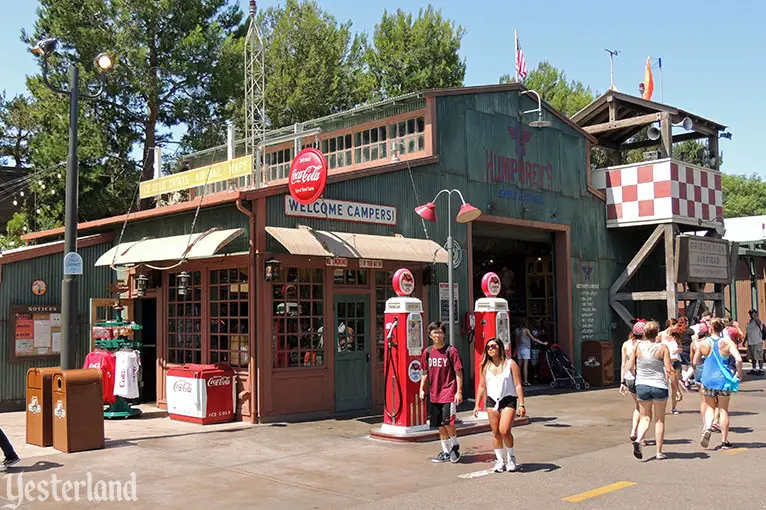
Photo by Werner Weiss, 2015 Humphrey’s (2015) |
|||
|
When Disney California Adventure emerged from its $1.1 billion enhancement project, it had eight lands—and no districts:
The former Bountiful Valley Farm had been split up between “a bug’s land” and Cars Land. The former Bay Area had been split up between Paradise Pier and Grizzly Peak. Golden Vine Winery had become a part of Pacific Wharf. In early 2015, Condor Flats disappeared from the list. Grizzly Peak Airfield is part of Grizzly Peak, not its own land or district. Disney California Adventure now has seven lands. |
|||
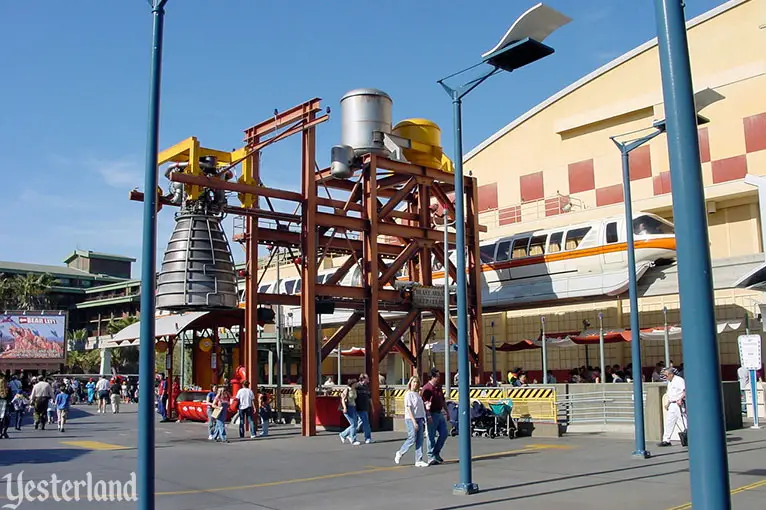
Photo by Allen Huffman, 2002 Rocket engine test structure (2002) |
|||

Photo by Werner Weiss, 2013 Rocket engine test structure (2013) |
|||
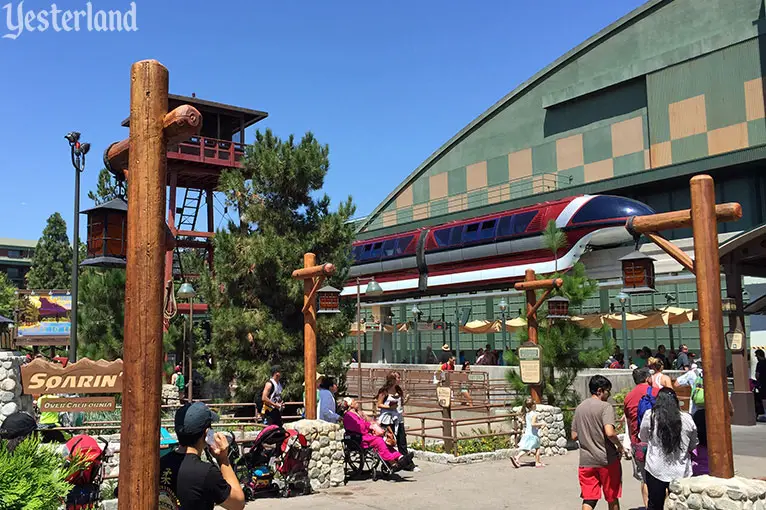
Photo by Werner Weiss, 2015 Mt. Muir Lookout (2015) |
|||
|
For its first 15 years, Condor Flats changed little. It lacked charm and authenticity. There was too much concrete pavement. The structures were coldly industrial. Despite the test center airfield theming, it’s unlikely that many guests thought, “wow, this feels just like a high desert airfield.” Condor Flats had the good fortune of being home to the biggest “hit” attraction of the new park—Soarin’ Over California. But it was the attraction experience that wowed guests, not the environment that housed it. Absorbing Condor Flats into Grizzly Peak was the obvious answer. The peak already formed one side of Condor Flats. The hang glider attraction (Soarin’ Over California) has a stronger connection to mountain recreation than to desert aviation, and its massive show building already felt like the other side of a canyon. Instead of “moving” the airfield from the desert into the mountains, Disney could have eliminated the airfield theme entirely. The big Soarin’ hangar could have been covered with granite rockwork for a Yosemite Valley look. Taste Pilots’ Grill could have been redone as a National Park lodge dining room, no longer looking like a hangar. Other structures could have been turned into mountain cabins and “historic” mining structures. The Monorail beam could have been dressed as a railroad trestle. The ground could have been redone as a continuation of Grizzly Peak’s Highway 49 with gentle elevation changes across a contoured valley floor. It could have been a landscape of side roads, bridges, streams, and waterfalls—without any airfield features remaining. But all that would have cost far more. The changes to the airfield were cosmetic—green paint, mountain landscaping, new naming, appropriate signage, wood instead of steel, and charming touches throughout. These changes were effective. They do a good job tying in with Grizzly Peak and making it a single, larger, more immersive land. |
|||
|
|
Click here to post comments at MiceChat about this article.
© 2013-2015 Werner Weiss — Disclaimers, Copyright, and Trademarks Updated September 4, 2015. |
||
